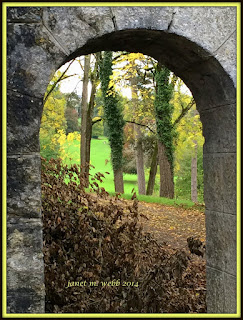 Originally, my plans for this were to create a mixtures of historic structure photography with a combination with the inspiration of photographer Lewis Baltz. As shown in my mind map here of my intentions, I wanted to focus on ruins, going into the Waltham Abbey Gunpowder Mills and take "aesthetic" images of old war shelters and ruins by framing them head on.
Originally, my plans for this were to create a mixtures of historic structure photography with a combination with the inspiration of photographer Lewis Baltz. As shown in my mind map here of my intentions, I wanted to focus on ruins, going into the Waltham Abbey Gunpowder Mills and take "aesthetic" images of old war shelters and ruins by framing them head on.Additionally, I made a post at the beginning of this project stating ideas for 5/7 of my shoots; 1. Churches, 2. Old houses and Cottages, 3. War Structures, 4. Wall remains, 5. Shops and pubs. Looking back at these initial ideas shows me just how much my work has developed across these short months. One of the key reasons behind the progression in this project would be the amount of research in which I done to complete the project. Firstly, the Image Bank was the first stem showing me different approaches. I think this shows a progression in not only my work in this topic alone but in my work in comparison to unit 1. Even though I didn't analyse all 30 images like I done in unit 1, I went into much more depth whilst also finding more photographers along the way which were useful in my project- for example I came across photographers such as Bernd and Hilla who subsequently ended up being one of the key photographers which helped the creation of my project. For example, their work combined with photographer Lewis Baltz showed me the importance of framing and composition. Personally, I now find taking photos in a head on approach is much more successful that taking them at an angle because across this topic it has taught me how when you take photos head on, it appears much more professional and looks much smarter- thus also teaching me the importance in the use of a tripod.
 When looking at my first shoot, I am quite happy with the outcome as I managed to create framing in my images. However, it is very clear from my first two shoots that I went out to complete these before I had conducted any of my research so not as much thought went into these shots as I had liked to. Furthermore, I believe it was a good starting point but I think it was much better for me to have developed my research further before completing any more shoots.
When looking at my first shoot, I am quite happy with the outcome as I managed to create framing in my images. However, it is very clear from my first two shoots that I went out to complete these before I had conducted any of my research so not as much thought went into these shots as I had liked to. Furthermore, I believe it was a good starting point but I think it was much better for me to have developed my research further before completing any more shoots.Additionally, it was during the edited and write up stages of these first two shoots when I came to the realisation that I needed to extend my work further than just the initial ideas because otherwise I would have struggled to analyse both my photos and the photos which I thought worked alongside.
Therefore, when it came to my Research Log I came across photographers such as Jason E. Powell and Julien Knez who had actually taken photos in comparing old images with what those locations look like now. Which I found really intriguing- thus giving me the influence and idea to experiment with this as one of my shoots. However, after the completion of my first Old vs New shoot, I was really pleased with the out come and thought that these were really good and interesting ways in capturing manufactured buildings and the state they used to be many years ago compared to what they stand to be today. I then decided to complete 2 more shoots in this style. Even though explaining that I done 3 of similar shoots, it may not sound like I have made much progress, however between each shoot I discovered new history about the images I was finding in the museum and library which helped me analyse in terms of context because it showed me juts how much had really change, but also I was learning new technique skills for me to experiment with. For example, the experimentation of physical experiments I developed my exploration through printing the new and old photos and ripping them and placing them together- to create a new image including parts of the new images and parts of the old images.
As a whole, I would say my project from start to finish has progressed really successful in terms of photographers work who has helped influence my work alongside the work I actually produced. I am much happier with the photographs which I have in my final portfolio in this project than I think I would have been if I were to have just focused on buildings such as just churches and ruins. I believe that looking at my final project now that it is much more interesting than I originally had thought it would have been.

























